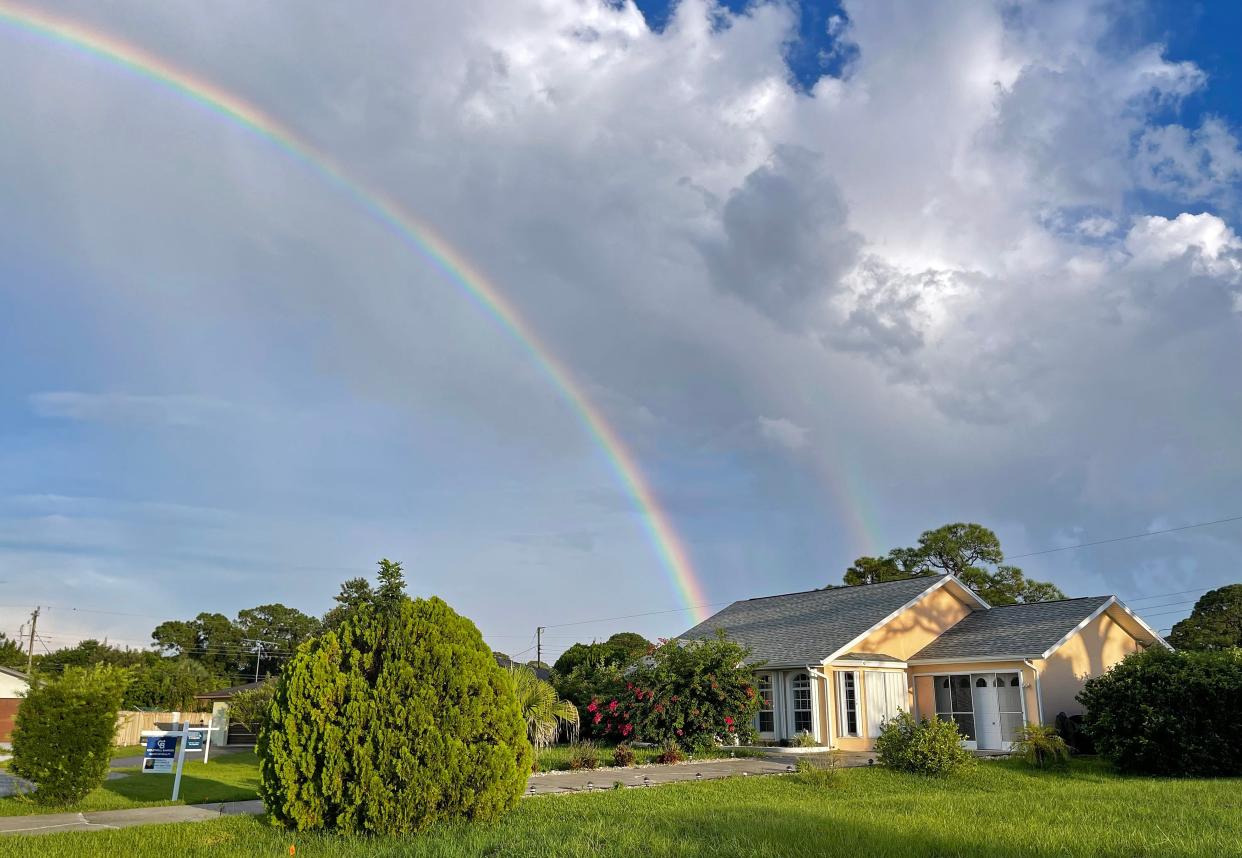Rising home prices, elevated mortgage rates: Why the spring housing market hasn't bloomed.
Spring has not yet sprung in the housing market.
With still-rising home prices and elevated mortgage rates, affordability challenges are holding homebuyers back.
The national median mortgage payment increased by 1.6%, from $2,093 to $2,061 in March, according to the Mortgage Bankers Association's Purchase Applications Payment Index, which measures how new monthly mortgage payments vary across time – relative to income.
“Homebuyer affordability remained constrained in March as elevated mortgage rates and low inventory kept prices high, leading many prospective homebuyers to delay decisions to enter the market,” said Edward Seiler, MBA's associate vice president, Housing Economics, and executive director, Research Institute for Housing America.

An increase in MBA’s Purchase Applications Payment Index – indicative of declining borrower affordability conditions – means that the mortgage payment to income ratio is higher due to increasing application loan amounts, rising mortgage rates, or a decrease in earnings.
Compared to March 2022, the index is up 14%.
More 'Golden Girls' than 'Friends': Can home sharing be the answer to America's housing affordability crisis? These housemates
Home sharing: Renting a room in your home? Consider these things before opening up your doors
Homeownership pays: Why it pays to buy a house: Homeowners became 40 times wealthier than renters in the past decade
Is cash king when buying a house?
Freddie Mac’s 30-year mortgage rate remained above 6.5% for most of March, dampening buyers' affordability.
The MBA’s mortgage affordability data only tells one piece of the story, however, and misses the large share of buyers who are not financing their home purchase, says Lisa Sturtevant, chief economist at BrightMLS.
Nearly 27% of buyers has all-cash sales, according to the National Association of Realtors.
“More than a third of repeat buyers in the Mid-Atlantic housing market paid cash for their home, and the majority of other repeat buyers have significant equity that they are able to roll into the purchase of a new home,” says Sturtevant. “So, while affordability has gotten worse, for some buyers, the higher mortgage rates have not been a deterrent.”
What is happening with home sales?
Pending home sales decreased in March for the first time since November 2022, according to the National Association of Realtors. Three U.S. regions posted monthly declines while pending sales in the South increased. All four regions saw year-over-year declines in transactions.
The Pending Home Sales Index – a forward-looking indicator of home sales based on contract signings – decreased by 5.2% in March. Year over year, pending transactions were down by 23%.
Total housing inventory at the end of March was 980,000 units, up 1% from February and 5.4% from one year ago (930,000).
Unsold inventory sits at a 2.6-month supply at the sales pace, unchanged from February but up from 2.0 months in March 2022.
"The lack of housing inventory is a major constraint to rising sales," says NAR Chief Economist Lawrence Yun. "Multiple offers are still occurring on about a third of all listings, and 28% of homes are selling above list price. Limited housing supply is simply not meeting demand nationally."
Where did homes sales go down (or up)?
The pending home sales index fell by 8% in the Northeast compared to last month and declined 24% since March. The Midwest index dropped 11% in March, down 21.5% from one year. The West index decreased 8% in March, and experienced the largest regional year-over-year drop, down 32.2% from March 2022, according to the National Association of Realtors.
The only region to show a slight improvement was the South, where the index went up by 0.2% in March. However, it fell 20% from the prior year.
“While many prospective buyers currently remain on the sidelines, MBA expects mortgage rates to decline slowly as the year progresses, which will help with affordability and may spur sales activity,” says Seiler.
The top five states with the highest PAPI (or least affordable) were: Idaho (256.5), Nevada (252.2), Arizona (227.7), Utah (219.6), and Florida (215.8).
The top five states with the lowest PAPI (or most affordable) were: West Virginia (118.9), Louisiana (125.3), Alaska (125.9), Connecticut (126.1), and Iowa (129.8).
What’s happening with home prices?
The median existing-home price for all housing types in March was $375,700, a decline of 0.9% from March 2022 ($379,300). But for a second time this year, the median existing-home price saw a month-over-month uptick, up 2%, from $367,500 in February.
February marked the first time in 131 months that home prices fell year-over-year, ending the longest price growth streak on record. But it also was the first time in seven months that home prices had climbed up month over month.
Swapna Venugopal Ramaswamy is a housing and economy correspondent for USA TODAY. You can follow her on Twitter @SwapnaVenugopal and sign up for our Daily Money newsletter here.
This article originally appeared on USA TODAY: As home prices still rise, why hasn't spring housing market bloomed?
